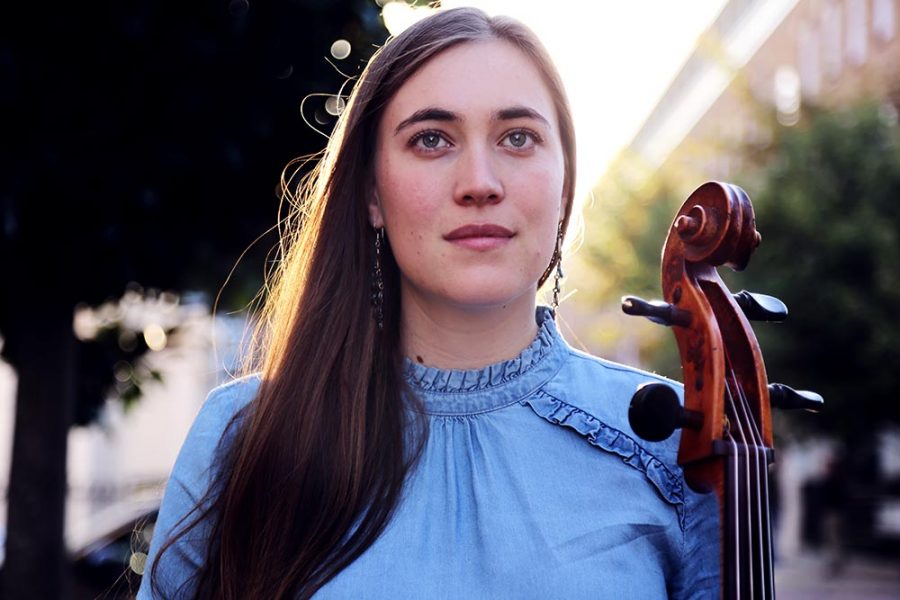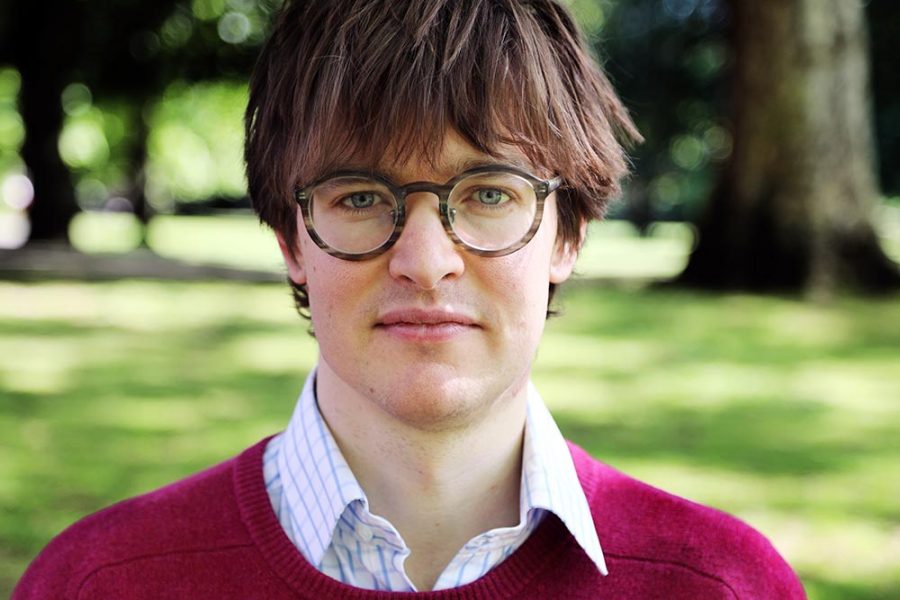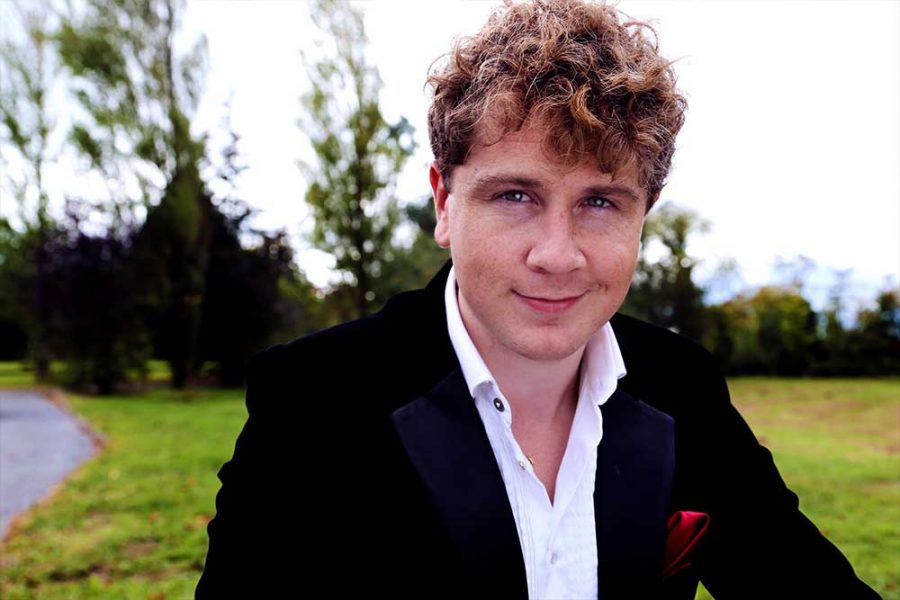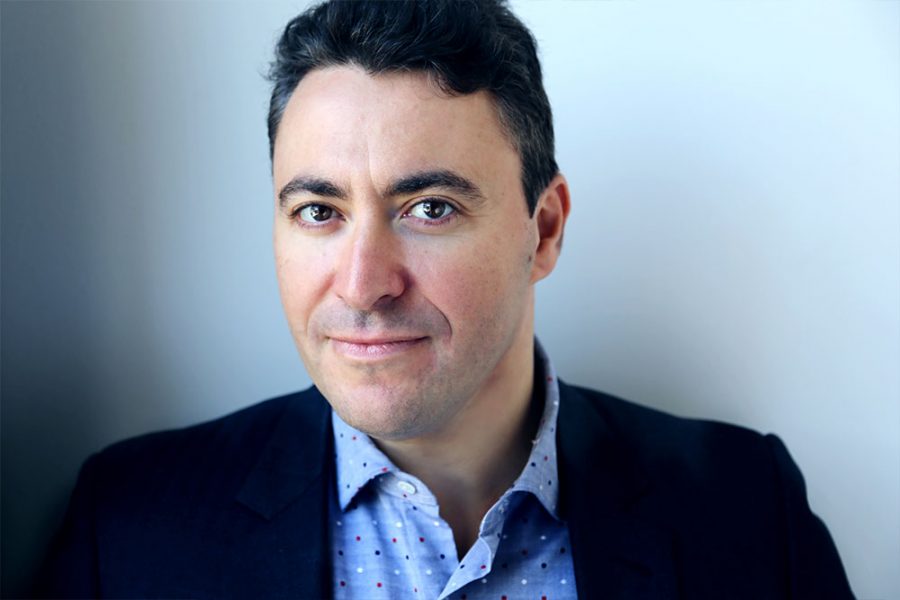Cello Chat with Sam Magill

September 2015
Words by
Emer Nestor
Photos by
Frances Marshall
Currently a member of the Metropolitan Opera Orchestra in New York, cellist Sam Magill enjoys a flourishing career as a soloist and chamber musician. He is especially regarded for his efforts in reintroducing lesser-known works back into the repertoire.
Magill’s recording of Vernon Duke’s (Vladimir Dukelsky) Cello Concerto (1942) with the Russian Philharmonic (2009), and his world premiere recording of Franco Alfano’s Sonata for Cello and Piano (1925) with Scott Dunn (2009), garnered high praise from the critical press. He also gave the world premiere of Andrew Rudin’s Cello and Piano Sonata (2011) and then recorded it for the Centaur label. Magill has just premiered Rudin’s Soliloquy for Solo Cello, written especially for the cellist, at Bargemusic in Brooklyn as part of the Here and Now Festival of new music. Magill’s passion for musical excellence extends beyond the performance arena to pedagogy. He enjoys sharing his knowledge with young cellists and preparing aspiring professionals for orchestral auditions. Magill is also one of the founding members of The Elysian Ensemble — a flute, cello and harp trio.
Magill met with Final Note along the banks of the Hudson River to chat about his musical journey from the North Carolina School of the Arts to the Met, and his passion for the cello.
The cello has the greatest range of all the orchestral instruments — four octaves capable of producing rich and expressive sound."

Why does the cello appeal to you over all the other orchestral instruments?
The cello has the greatest range of all the orchestral instruments — four octaves capable of producing rich and expressive sound. It is best at expressing melancholia, which appeals to me. In the Golden Age of Hollywood films, it is the cello which is allotted the most tragic scenes!
What inspired you to become involved in the performing arts?
When I was 14 I was sent to the North Carolina School of the Arts (a boarding school) and was immersed in the world of the performing arts. I was hooked from the very first moment. The faculty were first class and the talent within the student body was breathtaking.
Do you have any outstanding memories of your lessons with Zara Nelsova?
While I had many great teachers, it was Ms Nelsova who truly inspired me. Just to be in her incandescent presence was inspiration enough, but to hear her play only a few feet away from me opened up a whole world of possibilities. She possessed the most gorgeous tone of anyone I have ever heard in person. She was really the only teacher I had who showed me what it might be like to be a soloist. I still miss her terribly, as she was not only one of the greatest cellists of the 20th century, but one of the greatest people I have ever known.
Who were your musical influences during your studies at both the Peabody Institute and the Shepherd School of Music at Rice University?
At the Peabody I had the good fortune to study with the brilliant Lawrence Lesser. I studied chamber music with Karen Tuttle, Berl Senofsky, and Leon Fleisher — all legendary musicians. Due to the intimate size of the Peabody, it was possible to receive a huge amount of extra teaching time from each of these artists, all of whom gave so much back to the world. At Rice University my cello teacher was Shirley Trepel, the Principal cellist of the Houston Symphony. Hired by Sir John Barbirolli, she had been a pupil of both Feuermann and Piatigorsky at Curtis, and interpreted the orchestral cello solos in the most beautiful way I have ever heard before or since. Also on the faculty was the great violinist Eudice Shapiro, with whom any string player could take lessons.
The Shepherd School of Music at Rice University was a fantastic experience. They welcomed me with a generosity which would be hard to find now. Situated on a 300-acre campus in the middle of Houston, it has become one of the great conservatories of the United States. I was fortunate to be provided with a full scholarship, and I believe that almost all the graduate students there now pay nothing for their education.
Was the journey from the Houston Symphony Orchestra to the Met Orchestra ornamented with any interesting stories?
Well, in between those two positions I moved several times. I spent three years playing in the Pittsburgh Symphony, which was a great experience for me as they are a wonderful orchestra. Lorin Maazel was the Music Director — one of the greatest conductors for whom I have ever played. I would like to note that when I auditioned for the Met, I had just flown home a week prior from Taipei after a nearly four-week tour of Asia. Amazingly enough, it was the best I ever played in an audition, and I ascribe that to the fact that I was still jet-lagged. I had no nerves at all! Although I have been fortunate to win 3 orchestral auditions in my life, those were only three out of over 50 auditions which I have taken. I was a runner-up for the Chicago Symphony, the New York Philharmonic, and also for first desk positions in the Atlanta Symphony and the Chicago Lyric Opera.
You are well respected for championing and resurrecting lesser-known cello works — is it important to you to highlight ‘new’ repertoire, both for yourself and future cellists, to avoid the ‘boredom’ of performing the static list of western standards?
Yes, I feel strongly about that, because the “typical” cello recital is still largely stuck in a many-decades-long groove. It is important to utilize the fantastic repertoire which we, as cellists, possess. Over the years so many people have lamented the perception that our repertoire is so small! Nothing could be further from the truth, and I have spent many years unearthing several dozen works which I have performed. I discovered the Cello Sonata by Franco Alfano at the Library of Congress, and when I brought my xeroxed copies home and played through some of it on the piano, I was spellbound by the gorgeous writing and unique sound world of this unknown composer! I am the only cellist to have recorded this Sonata. In recent years many cellists have taken up the cause, as it were, so that now it seems that virtually everything has been recorded. But of course one never knows what lurks in libraries. The Sonata by Pierre de Bréville is another wonderful sonata by a pupil of César Franck.

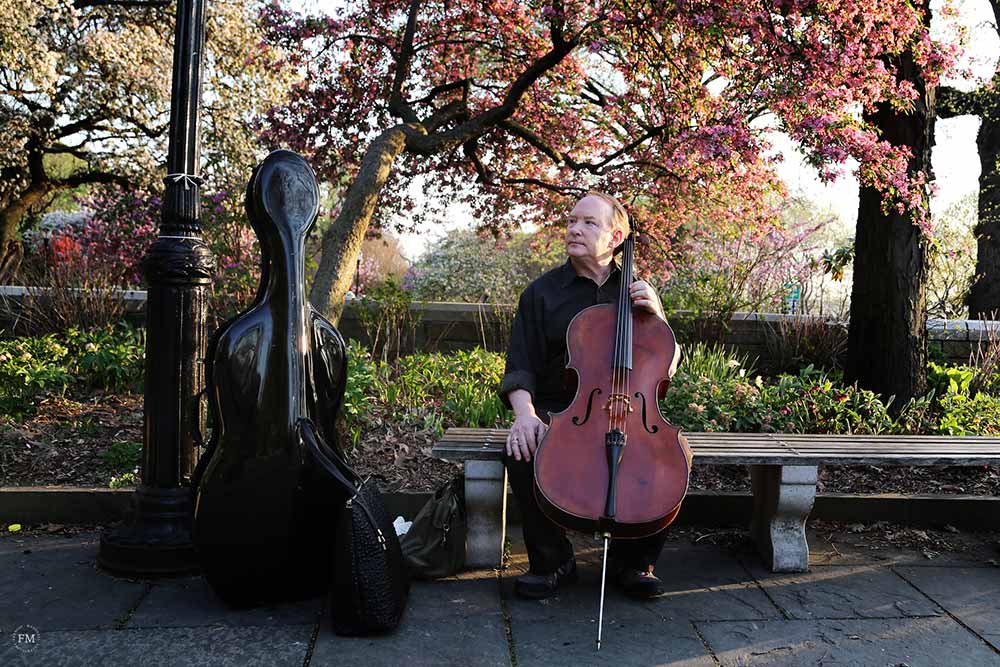


It is, above all, quality of tone which is the most important for the cello student, and I find that most teachers ignore this."

Why did you decide to record Vernon Duke’s (Vladimir Dukelsky) Cello Concerto and how did you approach such an interpretative task?
When Alan Pally, then director of the concert series at the New York Public Library for the Performing Arts at Lincoln Center, asked me if I knew anything about the Duke Concerto, I had to say that I had not heard of it. But then when he told me that it was published under the name Vladimir Dukelsky, I remembered that Piatigorsky had mentioned it in his autobiography. The Library was having a festival of the music of Vernon Duke to celebrate the 100th anniversary of his birth (2003) — ‘Duke’ was the name adopted by Dukelsky in order to write popular songs when he emigrated to the United States. Alan asked me if I would learn this concerto and play it on one of the programs. I said “yes”. It so happened that Duke’s widow, Kay Duke Ingalls, was in attendance, and right after the concert she told me that she would like me to record it! I was thrilled of course, and I went to Moscow to do the recording along with Kay and Scott Dunn (the pianist in the Duke Piano Concerto on the same Naxos CD). We did this with Dmitry Yablonsky conducting the Russian Philharmonic.
Luckily, Kay sent me a copy of the actual recording from the world premiere (1947) in Boston with Serge Koussevitzky and the Boston Symphony Orchestra. I used this to prepare such extremely demanding work. However, I did make changes in some passages because I felt that some of the extended pizzicato sections were not effective and couldn’t be heard over the orchestra, so I changed those to arco. Other than the live recording from the 1940s, I had nothing else to go on really. My recording is still the only one ever made commercially. I performed it live in New York (December 2014) and we believe that it was the first New York performance since 1947, when Piatigorsky played it in Carnegie Hall. That live recording from Boston, by the way, cannot ever be released commercially, as the last three minutes were mysteriously cut off! — a terrible loss!
What would you consider your most interesting/challenging performance or recording experience to date?
My favourite performance was in Japan in 1998. I performed, with orchestra, the Tchaikovsky Rococo Variations in the gorgeous Kioi Hall in Tokyo, which is such a perfect jewel of a hall…it cannot fail to be a pleasure to play there.
How would you define your philosophy of teaching?
I analyze each pupil with consideration of their physiology and level of advancement. Clearly no two people are alike, so I try not to force them into anything which would cause them discomfort. It is, above all, quality of tone which is the most important for the cello student, and I find that most teachers ignore this. They so often don’t show the student how to draw the bow properly so that it has constant contact with the string. I alway have Zara Nelsova in the back of my mind as I show the students how to start each day with 10 minutes of long tones on open strings. The idea is to try to play as close to the bridge as possible without producing any scratching, drawing the bow as slowly as is physically possible to do.
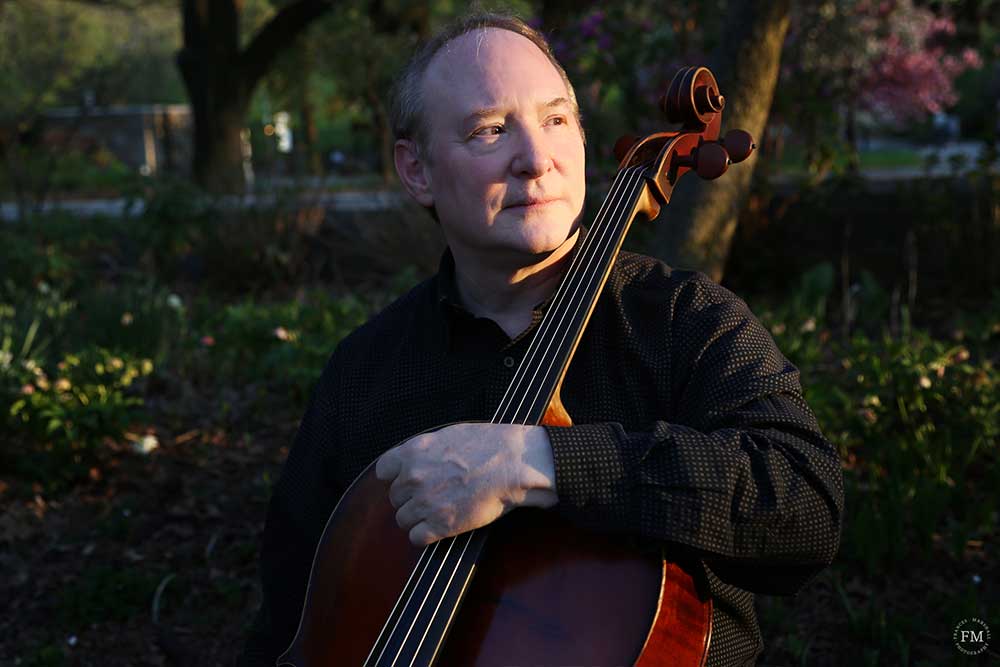


What advice would you give to young cellists who are preparing for auditions?
Because accuracy is paramount, I always show each cellist how to prepare with the use of an electronic tuner. Having a constant drone while you practice, very slowly, will eventually cause one to play in tune. Then after a while they should add the metronome. I always used both at once while preparing my own auditions.
Of equal importance is finding out how to actually produce various dynamics. It is very difficult to play truly softly, and once again, proper use of the bow will solve these problems. Most people think they are playing a pianissimo when they are not.
Tell us about the history of the instrument that you currently play and how you came to own it.
My cello was made for me by Peter and Wendela Moes in 1992. Though they live in Bavaria now, they lived in Manhattan then. Mine is a fantastic instrument with a bold, deep tone.
Describe the ethos of The Elysian Ensemble.
Being a trio made up of flute, cello, and harp is quite unusual and we are constantly searching for repertoire. Though there is a small number of original works, we do indeed have to make transcriptions. I have transcribed the viola parts for both the Debussy Sonata and Bax Elegiac Trio. These are very difficult to play but are, especially the Debussy, first rate and very satisfying works. We are soon to give a recital at the Bruno Walter Auditorium in New York in November, and will play the Debussy and the Bax along with the C Major Flute Sonata by Bach, and a Trio by Louis Spohr. A new transcription of mine will be played for the first time as well. This is the Suite Bréve by Ladislas de Rohozinski — a Pole who studied in Paris with d’Indy and lived there his entire life, writing some elegant chamber music.
Since the original works are sometimes very hard for audiences to listen to, we try to take the audience into account during the decision-making process. Even though I love the Divertissement by Wallingford Riegger (a twelve-tone work), we don’t play it often. There are two large trios by a Hungarian friend and colleague of Bartók’s, László Lajtha, but they are a bit mystifying for many concert goers. Since so much chamber music for the harp is by French composers, we try to find other nations to represent so that the programs don’t become monotonous. But the combination of instruments is so beautiful…all this effort is worth the trouble. And the other two members, Lucian Rinando (flute) and Elaine Christy (harp), are so wonderful to work with!
What makes your musical pairing with pianist Beth Levin so successful?
Because she is such a fabulous musician and she inspires me to play better than I normally would! And there is a meeting of minds too, so our playing together seems effortless.
Do you have any new premieres, or first recordings, up your sleeve?.
I have just finished recording a new CD, also with Beth Levin, for Parma Records, entitled Cello Music from Austria-Hungary — all three composers were born and raised within the then-borders of the Empire. First is the Beethoven ‘Kreutzer’ Violin Sonata, as transcribed by both Carl Czerny and Auguste Franchomme. I have made my own version using both of these arrangements. Second is the very first recording of the Ballade, Op. 171, by Emánuel Moór — a late Romantic Hungarian composer who was a pupil of Bruckner. He settled in Paris in the first decade of the 20th century and because close friends with Pau [Pablo] Casals. He wrote an enormous amount of music in all forms for Casals. Lastly, there is the seldom played solo Cello Sonata by Artur Schnabel, the great Austrian pianist and composer, who, though he never played modern music himself, wrote almost exclusively atonal music. This is a large (26 minutes) and extremely difficult work in four movements, but it is endlessly fascinating and I think it is the work of a genius. This CD should be released sometime in the late winter/early spring of 2016.
All images displayed in this article are subject to copyright.
Share this article


